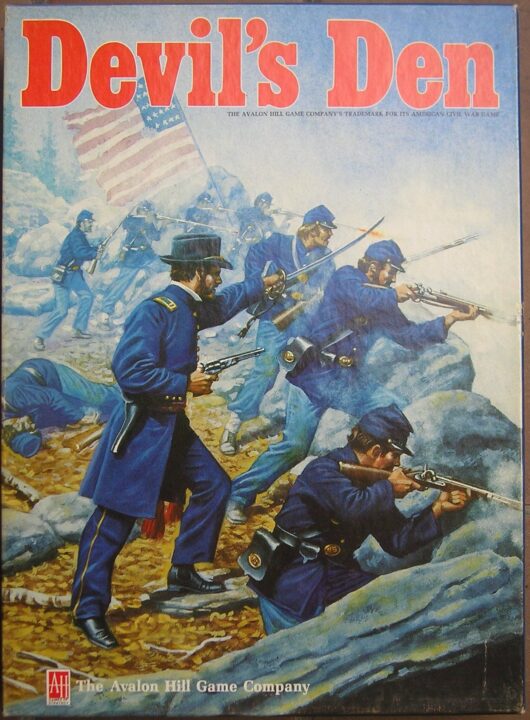Alright, friends, it’s time to talk about that mysterious box that caught my eye last month—no, not the one marked “danger: use tongs”—I mean Devil’s Den! Welcome to my review, where we’ll find out if this game brings the heat or just leaves you chasing your own tail. Grab some snacks, loosen your belts, and let’s see if this devilish delight is worthy of your next game night. Spoiler: I had a few laughs, a few groans, and maybe a tiny argument about rules. That’s board gaming, right?
How It Plays
Setting Up
First, toss the board on the table without knocking over anyone’s drink (seriously, Becky, get a cup holder). Give each player their colored devil puck, a player board, and those cute but slightly creepy soul tokens. Shuffle the event cards and drop them near the board—no peeking! Place all neutral tokens in their starting spots, and pick who goes first. I recommend whoever ate the most spicy food last week.
Gameplay
On your turn, pick an action: you can either move your devil, mess with others (my favorite), or collect souls. Then, events might pop up to spice things up or just ruin your best-laid plans (thanks, Event Deck). You’ll plot, plead, and maybe yell a bit as you jockey for control and try to foil your so-called friends. Rounds go fast, and most of the game is cackling at the table as you outwit—or get outwitted by—someone else.
Winning the Game
The game ends when the last soul token is claimed or the event deck runs out. Count up your souls—whoever hoarded the most wins! Beware, though: if you make enemies early, expect some hot revenge before the end. Only the sneakiest devil at the table gets bragging rights… until the next round.
Want to know more? Read our extensive strategy guide for Devil’s Den.
How Does Devil’s Den Actually Play? A Look at the Flow and Structure
Let’s spill the beans: Devil’s Den is nothing like that one game where you wait fifteen minutes for Trudy to decide if she wants to trade sheep for bricks. Here, turns move quick—almost too quick if you ask my friend Gary who once lost two bats and his pride in the space of a minute. Each round, you pick your action (haunting, reinforcing, or scheming), slap down a card, and watch chaos unfold across the spooky board. No player downtime here, folks. I honestly started moving snacks closer because I barely had time to reach the chips before it was my turn again.
The round structure keeps things spicy. There’s this nifty little night tracker—basically a countdown to doom. At the start, you get a minute to plot with your minions (or argue, if you play with my cousin) before you reveal your moves. Nothing feels more satisfying than outsmarting someone with a well-timed ambush, unless it’s watching their plans fall apart because they forgot to read the card text. Oh, and you have to keep an eye on those event cards—they can warp the game state in a blink. Some nights, it feels like the board is haunted by a poltergeist with a grudge against me in particular.
Devil’s Den wants you in the action, making choices, and plotting revenge. Next up, let’s find out if the game’s more brainy mastermind or dice-chucking goblin—yep, I’m talking about luck versus strategy. Get your thinking cap ready!
Luck vs. Strategy: Who Runs the Devil’s Den?
Alright, friends, let’s talk about the engine that keeps Devil’s Den running. Is this den ruled by wily masterminds, or does Lady Luck barge in and mess up your plans? After playing five rounds with my crew—Linda the Gambler, Smarty Steve, and Phil Who Forgets the Rules—I can swear on my last bag of cheese puffs that this game is a battlefield for both brains and chance.
The core mechanics put a lot of power in each player’s hands. You make choices every turn: who to trust, where to move, which actions to take. If you enjoy plotting smart moves and out-thinking your buddies, you’ll find plenty to love. I’ve seen Smarty Steve run away with the game using pure tactics. But here’s the twist: Devil’s Den sprinkles in some spicy randomness. There are dice rolls for certain events, and you never know quite what’s waiting behind some tiles. The card deck can save your bacon or ruin your best plan. I nearly flipped the table when fate handed Linda the one card she needed just as my evil plan was about to shine.
How does it all shake out? I’d say strategy wins, but luck can absolutely trip you. If you hate games where a lucky draw can undo your genius, you might find yourself yelling at cardboard. Still, most of our group felt that skill matters most, and luck only adds some fire to the mix. That keeps things tense and, yes, funny as heck when things go sideways.
Now, shuffle your cards and straighten your monocles, because next we’re talking about the glorious bits and art that make Devil’s Den a beauty on the table!
Devil’s Den Board Game: A Close Look at Component Quality and Artwork
If you’re like me, the first thing you notice when you unbox a new board game is the components. Devil’s Den did not disappoint. The pieces are chunky and sturdy, so you won’t break them in a fit of rage after your so-called friend blocks your only escape route for the third time. The cards are smooth and thick—no paper cuts here, unless you’re really trying, which would be weird. And the board itself? It lies flat! I know that sounds basic, but you’d be shocked how many games curl up at the corners like they’re auditioning for a new wave hairstyle.
The artwork in Devil’s Den is both spooky and kind of cozy. The den looks inviting enough that I’d probably move in if it weren’t filled with, you know, devils. The illustrations have a cartoonish charm, so it won’t spook your grandma but still sets the right mood. The color scheme uses lots of deep reds and purples, which makes the tokens really pop. I did spot one misprint on a card that said “You shal not pass,” but that just made me giggle and shout, “Nice try, Gandalf!” every time I played it.
Devil’s Den really shows love in its production values, and it’s the kind of game that just begs to sit out on your table. But will it keep getting played? Well, that depends who you invite—let’s talk about replay value with different groups next, so grab your weirdest friends!
How Well Does Devil’s Den Hold Up for Replay Value With Different Groups?
One thing I always test with any board game, including Devil’s Den, is how it holds up over time and with different types of players. Let me just say, my friends are not a shy bunch. We’ve got the cautious strategist, the wild card who loves chaos, and the poor soul who just wants to finish their chips in peace. Devil’s Den puts all these personalities to the test, and that’s where its replay value really shines.
The game changes depending on who you’re playing with. When I played with my family, we ended up forming shaky alliances, only to betray each other over the smallest advantage. With my board game night group, cutthroat tactics were out in full force—I’m still not sure if I lost more points or friendships that night. The game mechanics make it easy to try new strategies each round, so you hardly ever get the same experience twice. Plus, those little devilish twists and event cards keep folks guessing, so nobody can just coast on a winning strategy from last time.
Devil’s Den scales well too. It doesn’t slow to a crawl when you add more people, but it doesn’t become a chaotic mess either. Whether you have three players or six, it keeps everyone involved.
So, do I recommend Devil’s Den? Absolutely—unless you hate fun, or have some sort of allergy to laughter and the mild threat of betrayal. This one deserves a spot on your shelf (and maybe a spot in your will, since your friends might kill you for backstabbing them).
Conclusion
Alright folks, that’s a wrap for my review of Devil’s Den! If you want a fast-paced spooky game with more strategy than chaos, this is a surefire winner for your game night. The pieces look cool, the turns fly by, and every group makes it feel brand new. Sure, luck shows up sometimes and messes with my plans, but not enough to tip the whole thing over. It’s best with people who can handle a sneaky laugh or two. If you’re tired of games that never end or make you feel like a spectator, Devil’s Den is a breath of fresh (or maybe a whiff of brimstone) air. Thanks for reading to the end—now go grab some friends, get spooky, and see if you can outwit the devil. Review over, now roll the dice… unless you’re the type who flips the table when you lose. In that case, maybe just watch us play instead!


